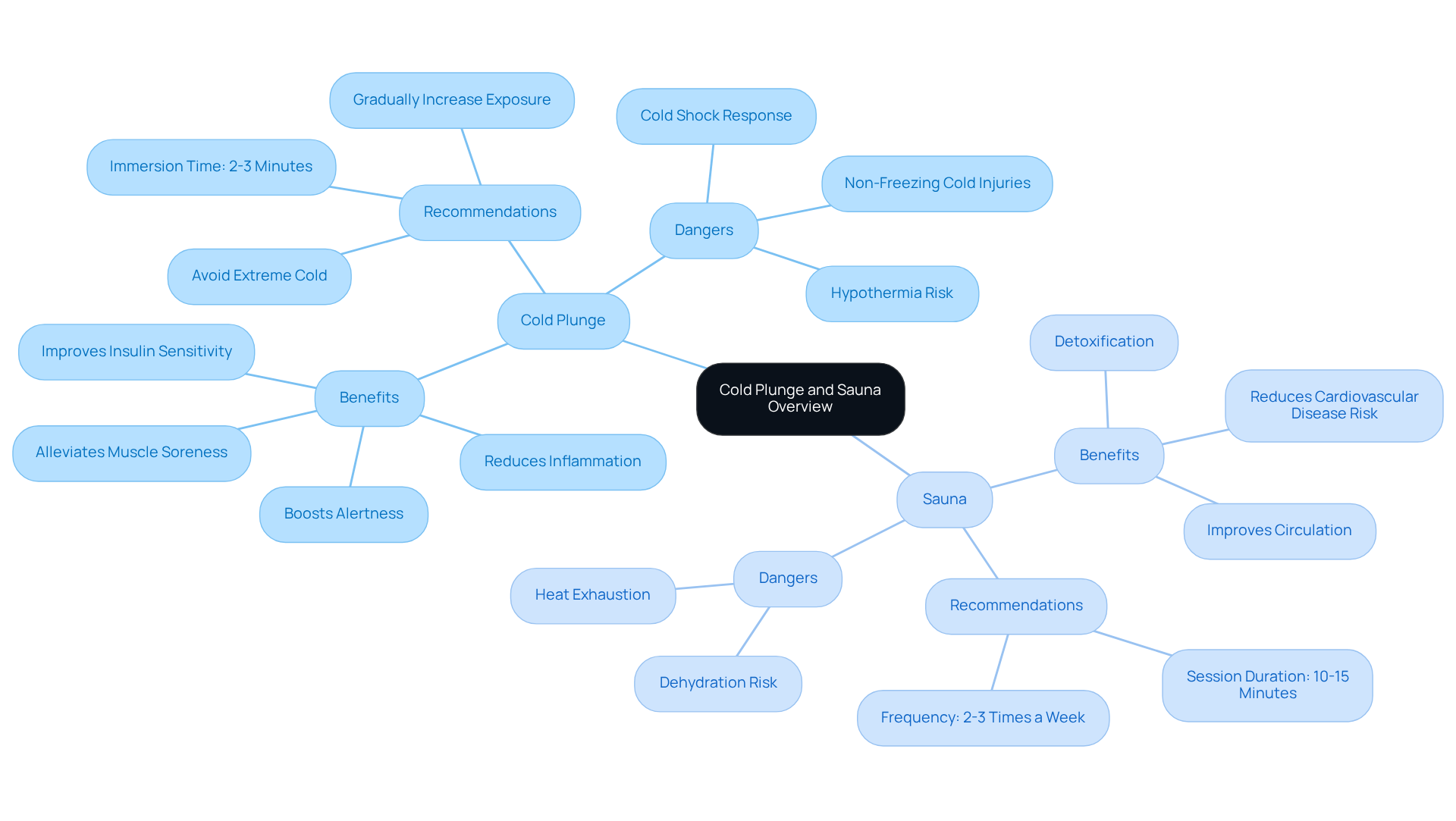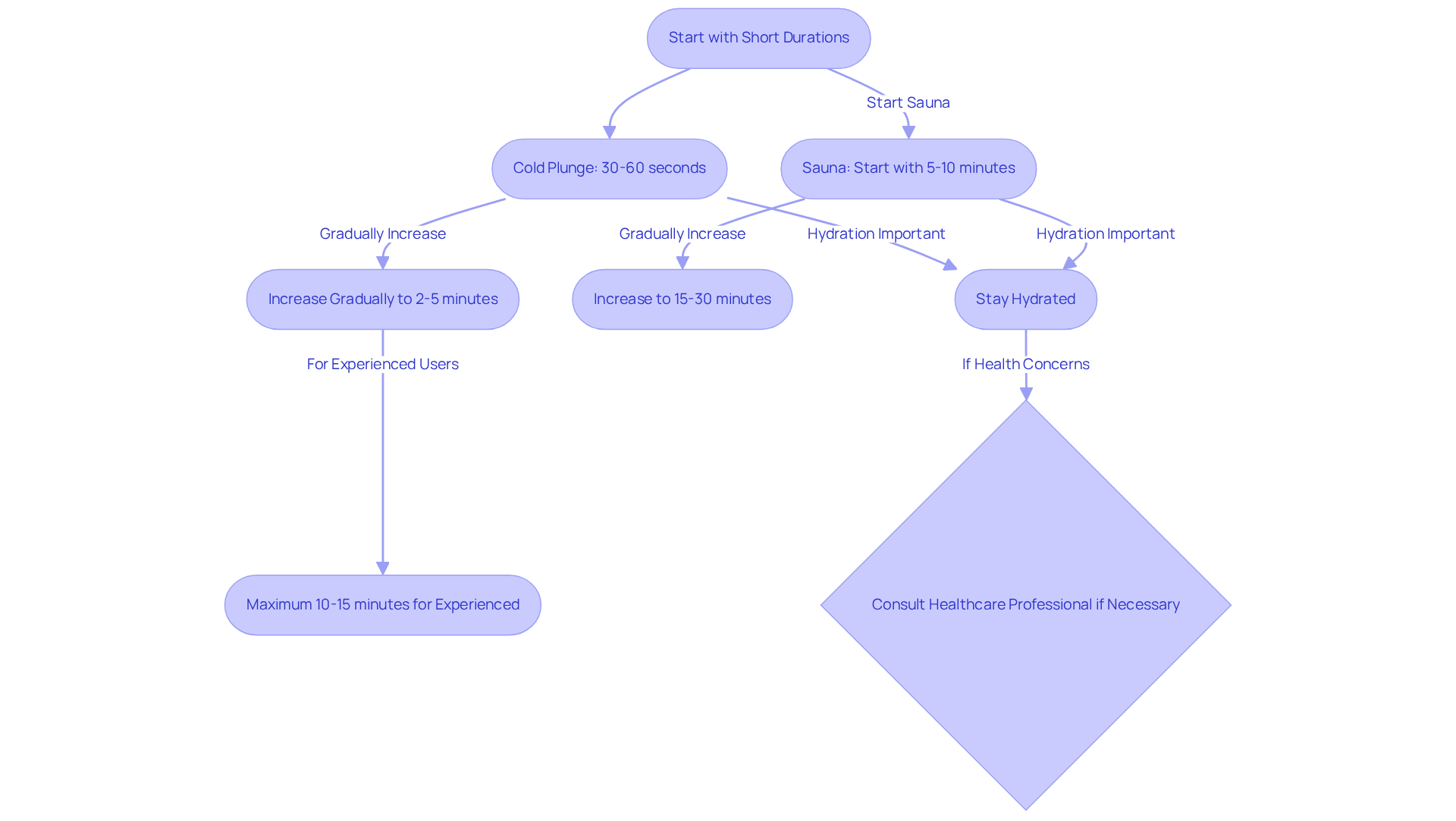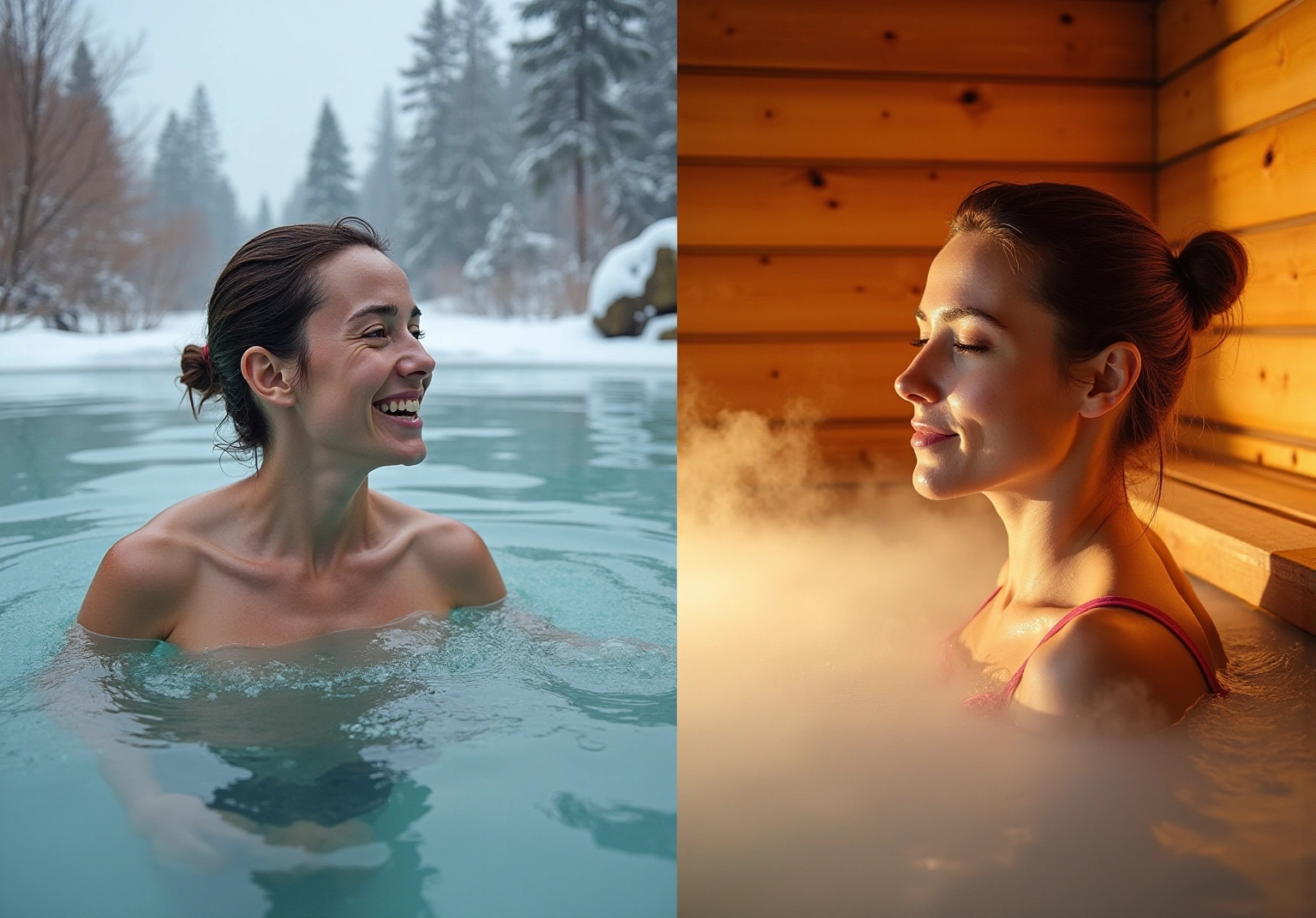Understanding the Benefits of Cold Plunge and Sauna for Wellness
Overview
The benefits of cold plunge and sauna practices for wellness are significant. They include:
- Improved circulation
- Reduced inflammation
- Enhanced recovery from physical exertion
Cold plunges stimulate physiological responses that aid in detoxification and immune function. In addition, saunas promote relaxation and cardiovascular health. As a result, the combination of these practices serves as an effective strategy for overall wellness.
Introduction
The intersection of ancient wellness practices and modern health trends reveals a powerful duo: the cold plunge and sauna. These contrasting therapies not only promote recovery and relaxation but also offer a myriad of health benefits, from improved circulation to enhanced immune function. As their popularity surges, many individuals may wonder: what are the best ways to safely incorporate these practices into a wellness routine, and how do they truly impact overall health? Exploring the science and cultural significance behind cold plunges and saunas unveils a fascinating journey toward optimal well-being.
Define Cold Plunge and Sauna: An Overview
A chilly plunge involves submerging the body in cool water, typically at temperatures below 60°F (15°C), for a brief duration. This practice is well-known for its recovery benefits after intense physical activity, primarily by reducing inflammation and alleviating muscle soreness. Research shows that just five minutes of immersion in chilly water can boost feelings of alertness and attentiveness, as evidenced by a study involving 33 adults.
In contrast, a heated room is designed for relaxation and detoxification, operating at temperatures between 150°F and 195°F (65°C to 90°C). Saunas encourage sweating, which aids in eliminating toxins from the body. The benefits of cold plunge and sauna are gaining popularity in wellness communities, as they are often used together to enhance recovery and revitalization.
Experts recommend that beginners limit their immersion time to a few minutes, once a week, and avoid excessively cold temperatures to ensure safety. Furthermore, it is crucial to be aware of potential dangers associated with icy plunges, such as hypothermia and the cold shock response.
Incorporating these practices into a regular wellness routine can amplify the benefits of cold plunge and sauna. Routine exposure to low temperatures has been shown to improve insulin sensitivity and increase metabolic rates, while sauna use is linked to reduced cardiovascular disease risk and enhanced overall longevity.

Explore Health Benefits: Cold Plunge and Sauna Effects
The benefits of cold plunge and sauna include an array of health advantages, such as improved circulation, reduced inflammation, and enhanced recovery from physical exertion. When the body is immersed in chilly water, a physiological response occurs: blood vessels constrict, aiding in the removal of toxins and reducing swelling. Research indicates that regular exposure to cold water can significantly elevate dopamine levels, which contributes to improved mood and mental clarity. Furthermore, this practice may bolster immune function by stimulating the production of white blood cells, enhancing overall health resilience. Notably, cold plunges can increase metabolism by up to 350%, further supporting metabolic health.
In contrast, steam rooms are associated with numerous health benefits, such as stress reduction, improved cardiovascular health, and enhanced detoxification. The warmth generated in a steam room raises heart rate and encourages sweating, which can lower blood pressure and improve circulation. Regular steam bathing has been linked to a reduced risk of heart disease and stroke, along with improvements in sleep quality and mental health.
Combining these two practices—alternating between the warmth of a steam room and the chill of a plunge—creates a powerful contrast therapy that maximizes the benefits of cold plunge and sauna. This approach not only promotes recovery and relaxation but also rejuvenates the body and mind, making it an effective strategy for those committed to enhancing their wellness. However, it is crucial to consult a sports medicine expert before starting cold-water immersion to ensure safety and proper technique, as risks such as hypothermia and frostbite can occur.
Historical Context and Cultural Significance
Cold plunges and hot baths are steeped in rich historical traditions, particularly within Nordic and Eastern cultures. In Finland, the steam room transcends mere physical cleansing; it acts as a vital social hub where community bonds are strengthened. Historically, saunas have played crucial roles in significant life events, including childbirth and healing rituals, reflecting their deep cultural importance.
Chilly plunges also boast a long-standing history, from the ancient Roman baths to modern ice baths, utilized for recovery and rejuvenation. Notably, figures such as Hippocrates advocated for the use of cool water to address various ailments, while Vincent Priessnitz popularized cool water therapies in the early 1800s, laying the groundwork for contemporary hydrotherapy.
These methods have not only endured through the ages but have also adapted to modern wellness trends, showcasing their health advantages, including the benefits of cold plunge and sauna, which help in reducing inflammation and accelerating recovery. The cultural significance of these rituals is further illustrated by the enduring popularity of heat and chilled water activities in Nordic nations, where they are regarded as essential components of a balanced lifestyle.
Moreover, modern advancements in ice bath therapy and the emergence of Polar Bear Clubs underscore the ongoing relevance of these practices in today’s wellness culture.
Safety Considerations and Best Practices
Chilly immersions and saunas offer various health advantages, emphasizing the benefits of cold plunge and sauna, but it is crucial to engage with them carefully. Individuals should start with shorter durations and gradually increase their exposure to avoid shock or discomfort.
For cold plunges, beginners are encouraged to begin with 30-60 seconds, gradually increasing their time. Immersion is typically limited to 2-5 minutes for most users, with a maximum of 10-15 minutes for more experienced individuals. This method not only assists in muscle recovery but also improves circulation and strengthens the immune system.
Sauna sessions should ideally be kept between 15-30 minutes, depending on individual tolerance levels. Newcomers are advised to start with 5-10 minutes and extend their time as they acclimate. Hydration is essential during these activities; individuals should consume 16-20 oz of water approximately 2 hours prior and ensure they drink plenty of water afterward to prevent dehydration.
Furthermore, those with specific health conditions, such as cardiovascular or respiratory issues, should seek guidance from a healthcare professional before engaging in these therapies.
By adhering to these best practices, individuals can safely enjoy the many benefits of cold plunge and sauna sessions while reducing potential risks.

Conclusion
The exploration of cold plunge and sauna practices reveals their profound impact on wellness. Emphasizing recovery, relaxation, and rejuvenation, these methods not only enhance physical health but also contribute to mental clarity and emotional well-being. By integrating these contrasting therapies into a regular routine, individuals can unlock a myriad of benefits that promote overall vitality and resilience.
Key insights from the article highlight the physiological responses triggered by cold immersion and heat exposure:
- Cold plunges reduce inflammation, boost metabolism, and elevate mood through increased dopamine levels.
- Saunas improve circulation, detoxification, and cardiovascular health.
The historical significance of these practices underscores their enduring relevance, as they have been embraced across cultures for centuries, adapting to modern wellness trends.
Ultimately, incorporating cold plunge and sauna sessions into a wellness routine is more than just a trend; it is a commitment to holistic health. By following safety guidelines and best practices, individuals can safely enjoy the myriad benefits these therapies offer. Embracing such practices not only enhances personal well-being but also fosters a deeper connection to the rich traditions that have shaped our understanding of health and recovery.
Frequently Asked Questions
What is a cold plunge?
A cold plunge involves submerging the body in cool water, typically below 60°F (15°C), for a brief duration. It is known for its recovery benefits, such as reducing inflammation and alleviating muscle soreness after intense physical activity.
What are the benefits of a cold plunge?
Cold plunges can boost feelings of alertness and attentiveness, reduce inflammation, and alleviate muscle soreness. Research indicates that just five minutes of immersion can enhance these feelings.
What is a sauna?
A sauna is a heated room designed for relaxation and detoxification, operating at temperatures between 150°F and 195°F (65°C to 90°C). Saunas encourage sweating, which helps eliminate toxins from the body.
How do cold plunges and saunas complement each other?
Cold plunges and saunas are often used together in wellness routines to enhance recovery and revitalization, providing complementary benefits for physical and mental well-being.
What precautions should beginners take when using a cold plunge?
Beginners should limit their immersion time to a few minutes, once a week, and avoid excessively cold temperatures to ensure safety. Awareness of potential dangers, such as hypothermia and the cold shock response, is also crucial.
What long-term benefits can be gained from regular use of cold plunges and saunas?
Regular exposure to low temperatures from cold plunges can improve insulin sensitivity and increase metabolic rates, while sauna use is associated with reduced cardiovascular disease risk and enhanced overall longevity.






